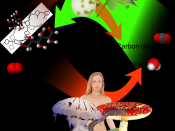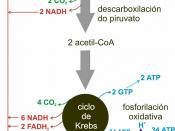Cells of all organisms are capable in acquiring the energy necessary to fuel chemical reactions for growth, repair, survival, and reproduction. Photosynthesis & cellular respiration are the main pathways of energy flow in living things. Photosynthesis is a process by which plants and some other organisms convert, light energy from the sun, CO2 from the air & H2O from the earth, into chemical energy stored in molecules like glucose. Cellular respiration is a process in which O2 is delivered to cells in an organism & metabolic process in cells leads to the production of ATP by the breakdown of organic substances. Cellular respiration occurs in the mitochondrion of the cell and photosynthesis occurs in the chloroplast. There are some similarities between the process involved however their products and reactants are the exact opposite.
Photosynthesis can be divided into two stages: Light Reaction & Calvin Cycle. The process of photosynthesis begins when excited its electrons go into a primary electron acceptor (PEA).
They are then passed onto a series of molecules known as the electron transport chain (ETC). The electrons eventually combine with a proton and NADP+ to form NADPH. Another process called chemiosmosis also occurs in the light reaction. Chemiosmosis is a process in which ATP (energy) is produced. So, light, H2O, ADP and NADP+ are required for the light reaction and O2, ATP & NADPH is produced. The ATP and NADPH molecules then go into the dark reactions. In the dark reactions, an enzyme combines CO2 with a five-carbon compound (RuBP). This process makes two G3P molecules. One G3P goes into the production of organic compounds and the other G3P goes back into Calvin Cycle as RuBP. In this reaction, CO2, ATP and NADPH are needed to make ADP, RuBP & NADP+. ADP & NADP+ further...


